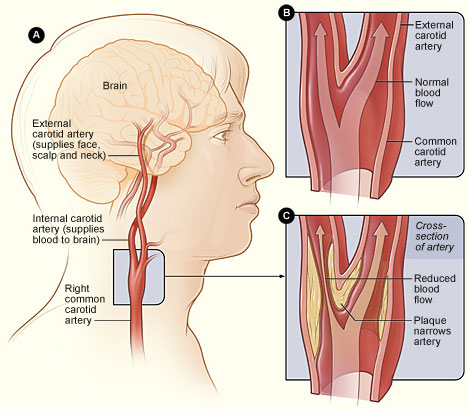Carotid Endarterectomy
In a carotid endarterectomy, atherosclerotic plaque that has built up on the inside of the carotid artery wall is surgically removed. An incision is made on the side of the neck where the affected carotid artery is located. Under direct visualization, the artery is opened and the plaque removed. The artery is sutured back together, restoring normal blood flow to the brain. This procedure may be performed while a patient remains awake under local anesthesia or while the patient is asleep under general anesthesia.

Carotid artery disease
Carotid artery disease occurs if plaque builds up in the carotid arteries. The carotid arteries supply your brain with oxygen-rich blood.
Plaque is made up of fat, cholesterol, calcium, and other substances found in the blood. Over time, plaque hardens and narrows the carotid arteries. This limits or blocks the flow of oxygen-rich blood to your brain, which can lead to a stroke.
A stroke also can occur if the plaque in a carotid artery cracks or ruptures (bursts). Blood cell fragments called platelets (PLATE-lets) stick to the site of the injury and may clump together to form blood clots. Blood clots can partly or fully block a carotid artery.
A piece of plaque or a blood clot also can break away from the wall of the carotid artery. The plaque or clot can travel through the bloodstream and get stuck in one of the brain's smaller arteries. This can block blood flow in the artery and cause a stroke.
(Content adapted from the National Institutes of Health.)